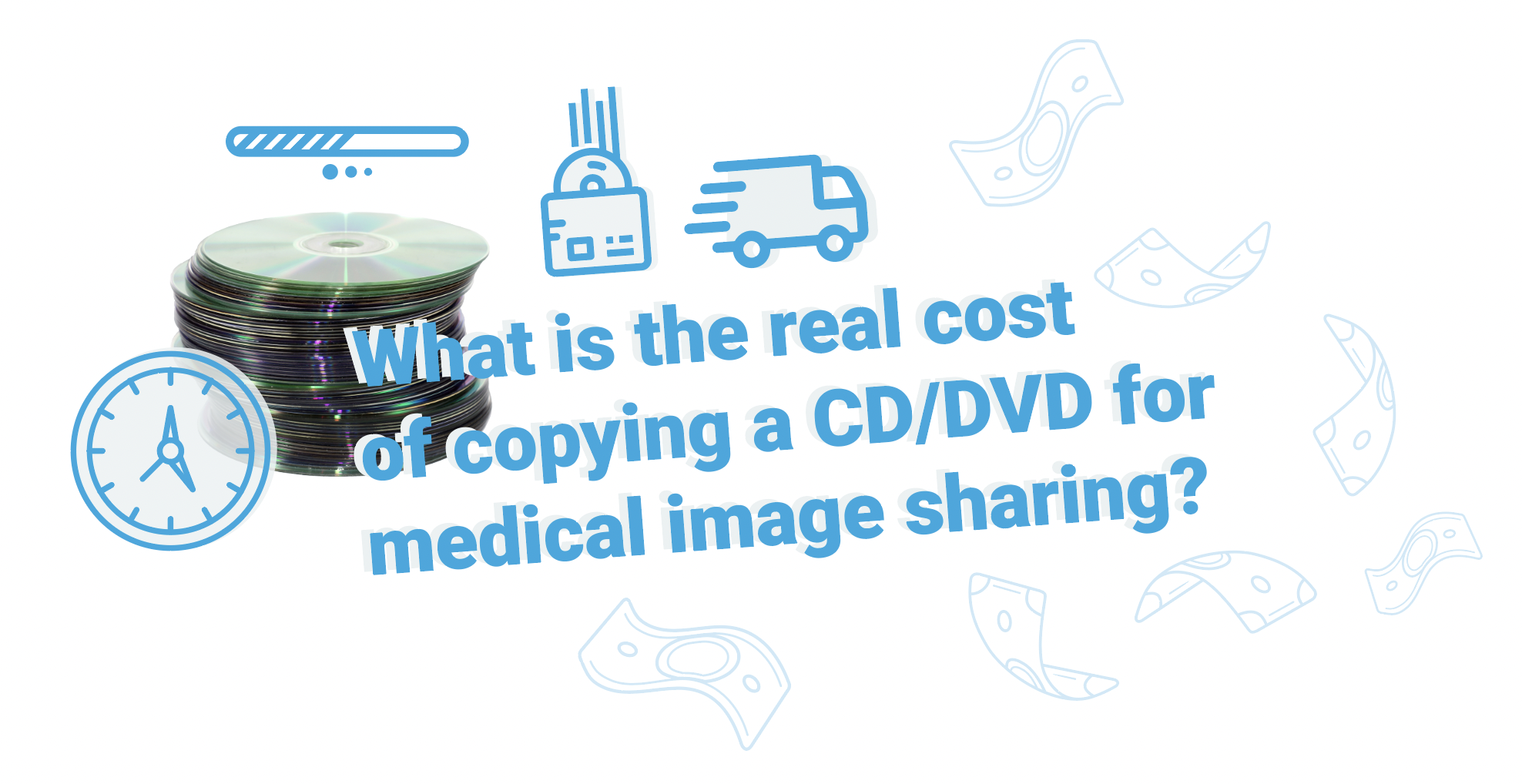What is the REAL COST of burning a CD/DVD every time you want to share medical images?

In the world of medical imaging, CDs and DVDs are still one of the most common ways that medical images are being shared. Firms who handle medical malpractice and personal injury cases find that the time and costs add up fast. The video (right), "What is the real cost of copying a CD/DVD for medical image sharing?" walks through the process of copying a CD with medical images in real time; identifying the soft costs incurred each time you or someone in your practice actually copies a CD/DVD.
![]() Time to copy, package, label, and mail CD:
Time to copy, package, label, and mail CD:
~ 15+ minutes minimum to copy an average size CD/DVD (if there are no issues)
~ 5 minutes to package and label CD/DVD
 Cost of materials:
Cost of materials:
~ < $1 for each individual CD/DVD
~ $5 to package and mail or $50+ for overnight delivery
![]() Risks:
Risks:
~ Potential HIPAA breach if package is lost, stolen, or sent to incorrect address
~ CD/DVD scratched or broken in transit
~ Time delays
~ Recipient lacks a CD/DVD drive
Not So Fast?
We often hear from those managing this process that they will need to copy a CD/DVD several times for a single case. If you watched the video, you can see just how much time is spent when copies and cases are multiplied. If you're considering or using the alternative of emailing the medical images or share via an online file sharing site, think again.. Your clients' medical images are considered private health information (PHI) and you have the responsibility under HIPAA to keep your clients' medical records secure and confidential. To learn more about HIPAA responsibilities for attorneys and law firms, you can read: Navigating Turbulent Legal Waters: HIPAA Responsibilities for Lawyers Handling Private Health Information in Litigation
The Alternative?
Why are we still burning CDs when our computers don't even come with CD drives? CDs were the norm for medical imaging two decades ago; their capacity accommodated the size of these files. Medical images are most often in DICOM format, which may be comprised of thousands of individual slides (images) called a study. They require a special type of viewer to be able to see the slides. Typically, the CD sent from a medical facility comes with a very basic viewer serving most casual users. There is a better way. Using solutions like Purview Image™, attorneys can instantly share with multiple parties simultaneously; clients, experts, colleagues and opposing counsel. They can also electronically share comments and reports from their experts, quickly vetting cases and adding important context to those with merit.
According to a study by the National Library of Medicine, the defendant of a malpractice case tends to win 80% to 90% of jury trials that have weak evidence of medical negligence, 70% of jury trials in borderline cases, and 50% of cases with strong evidence of medical negligence. Gathering and showcasing compelling evidence is critical.
Want to learn more?
Watch the recent webinar:
Attorneys Leveraging Medical Imaging During Litigation
or reach out to us with your questions



